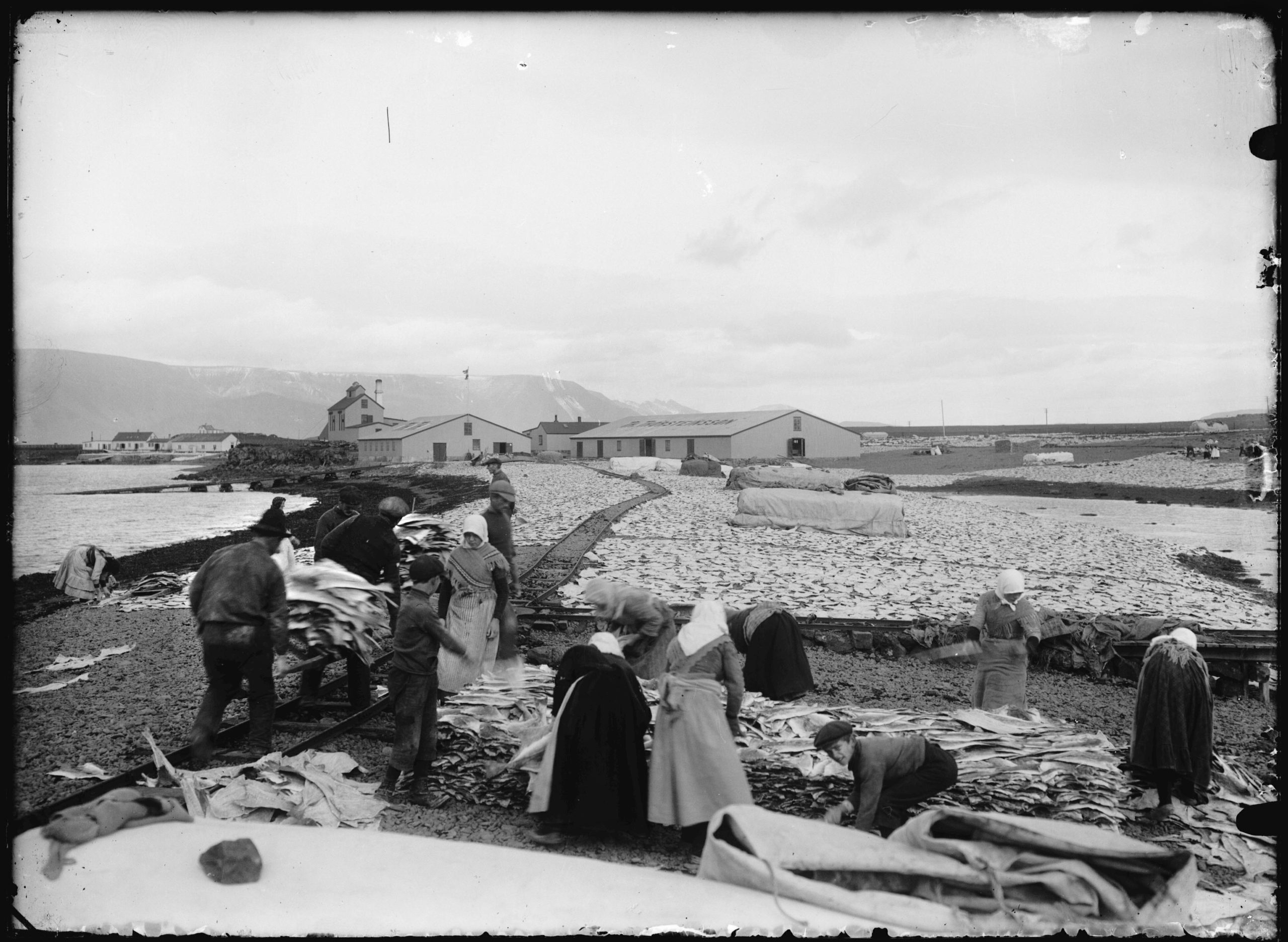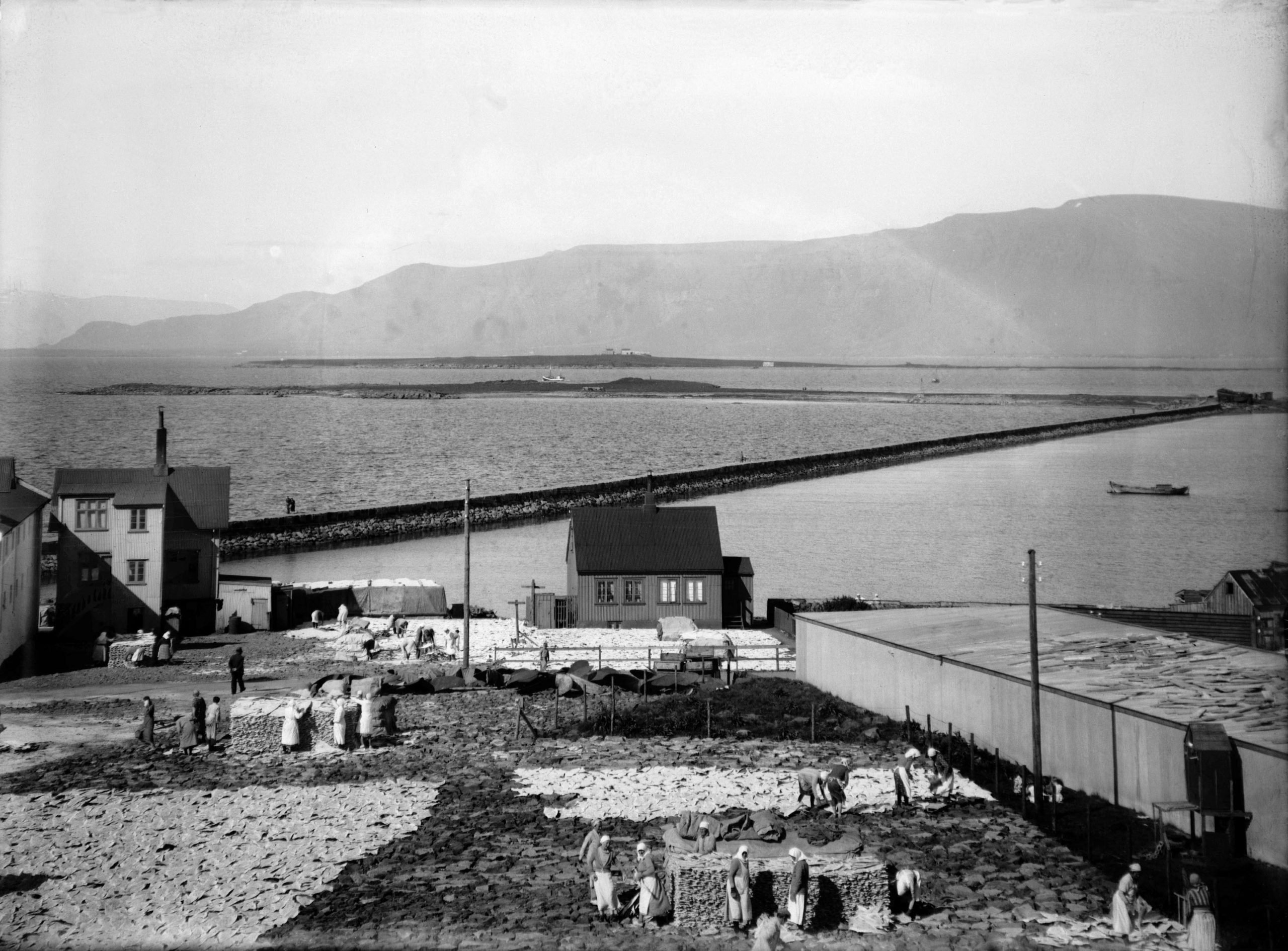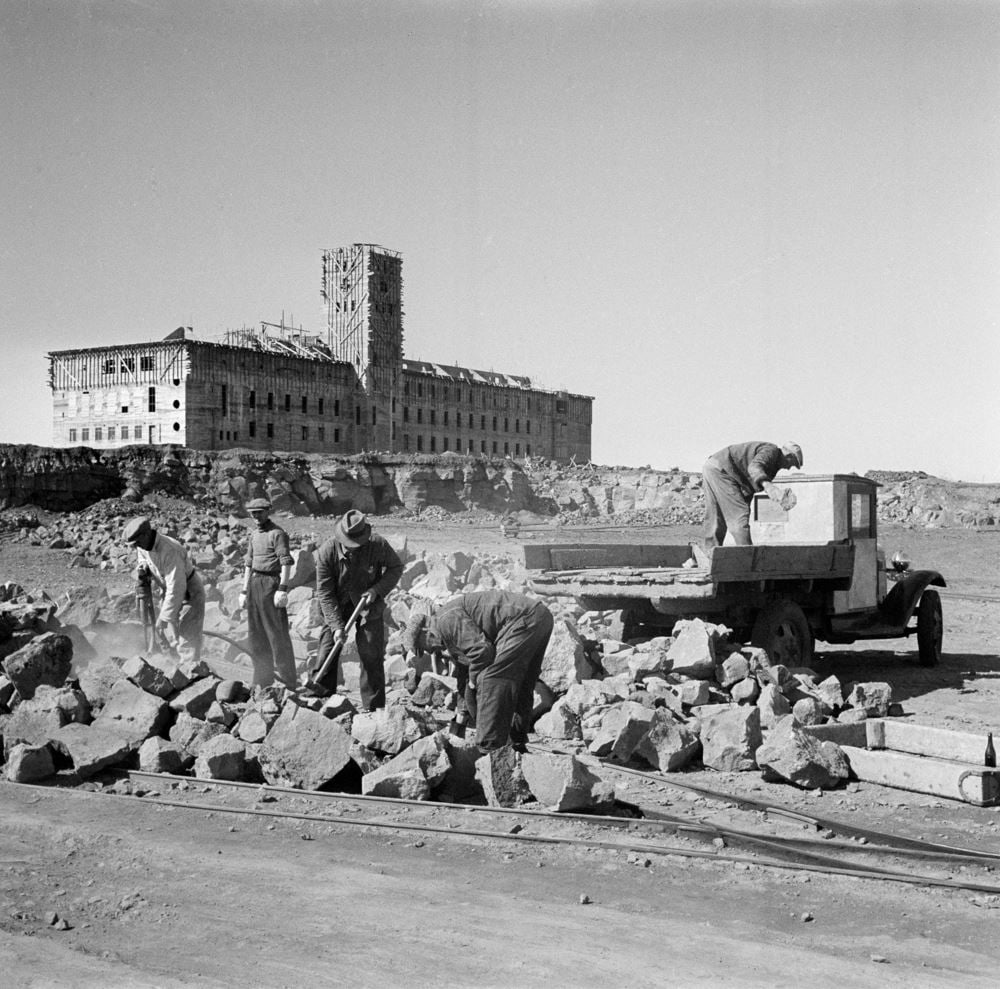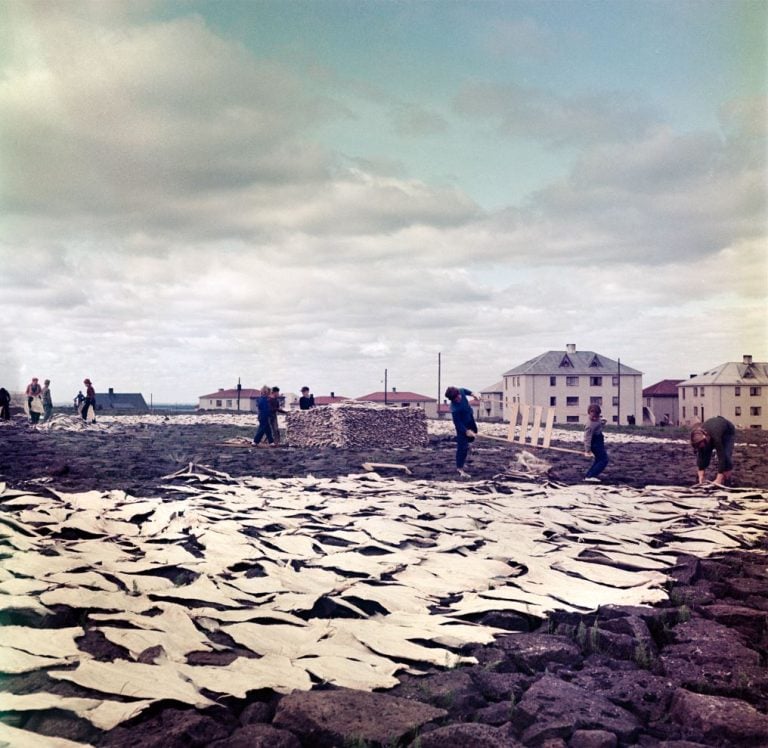
The traditional way of drying fish in Iceland
In the first half of the 20th century, when saltfish was a major export commodity, there were fish drying grounds all over Reykjavík, where white saltfish shone in the sun on fine days. Large drying-grounds were located, for instance, at Kirkjusandur, Ánanaust and Þormóðsstaðir. The drying-grounds were generally manmade.
Most of the fish-drying grounds disappeared long ago under buildings and roads, but the remains of one can still be seen at Rauðarárholt hill. The large fisheries enterprise Kveldúlfur used the site intensively in the 1920s and 30s, and it remained in use until the 1950s. The Kveldúlfur fish-factories stood on Rauðarárholt hill, with drying grounds around them. Fish – mostly cod – was salted as a method of preservation. Fresh fish is strewn with salt, which draws water out of the flesh to form a solution which “cures“ the fish. The salted fish was initially stacked to cure, and the process was generally repeated, after which the fish was washed and then spread to dry in the sun on drying grounds. The drying process took four to six weeks: the saltfish was spread out on rocks or wooden pallets, and left all day to dry if the weather was good. In the evening it was re-stacked and covered with sailcloth to keep it dry. If it started to rain, the fish had to be quickly gathered together. Saltfish production usually took place from spring to autumn, employing men, women and children. Production rose steadily until 1930, but the introduction of freezing technology in the 1940s led to a decline in saltfish production. The principal export markets for saltfish (bacalao) are Spain and Portugal.
To the southeast of this drying ground at Rauðarárholt is the old College of Navigation, built in 1945, which is now part of the Reykjavík Technical College. The building was designed by architects Sigurður Guðmundsson and Eiríkur Einarsson. In the tower is a beacon to guide seafarers into Reykjavík Harbour. To the south of the drying-ground is Háteigur Church, built in 1965, designed by architect Halldór H. Jónsson.


Historical markers in Reykjavík
In recent years the City of Reykjavík has been installing historical markers around the city. Such markers at historic sites and areas within Reykjavík enrich the experience of both residents and visitors, and provide information on the city‘s culture and history. The markers display information about history, art, literature and social life relating to the site in question, accompanied by pictures.
Text and photos: Reykjavík City Museum
See further at www.reykjavikcitymuseum.is


